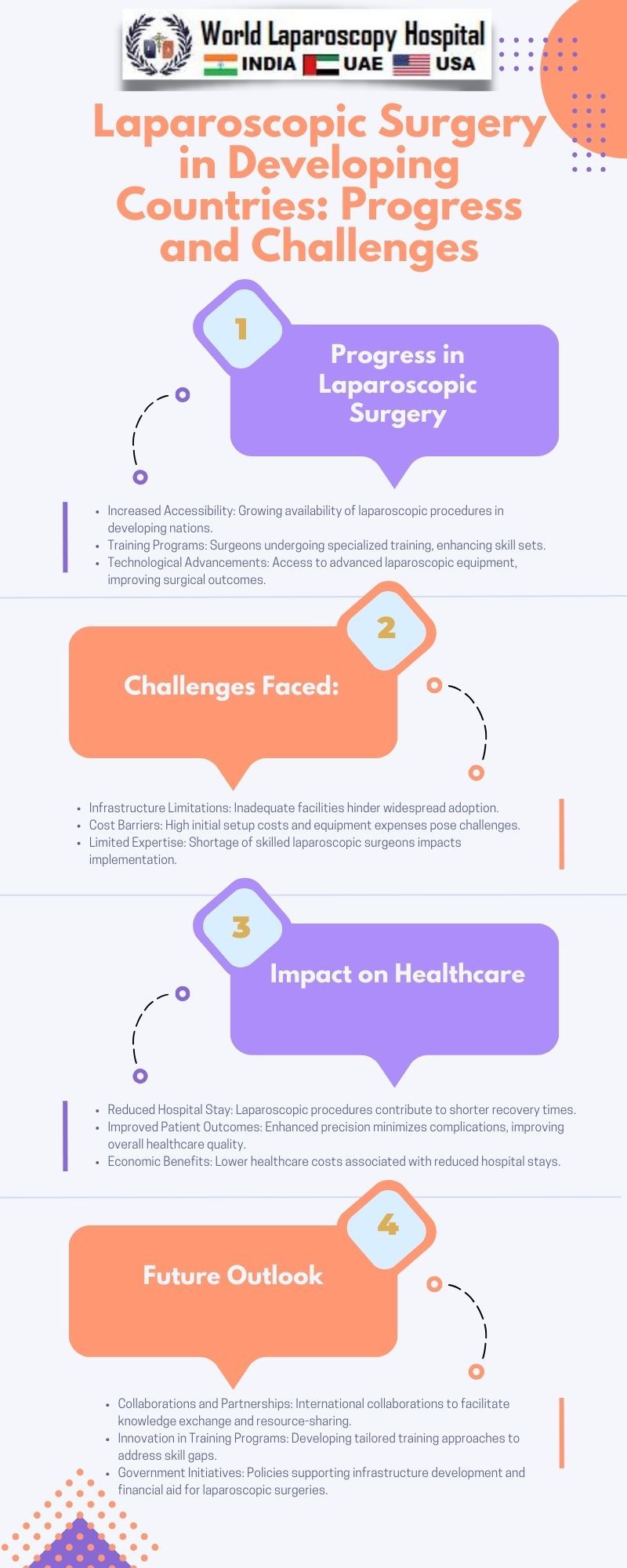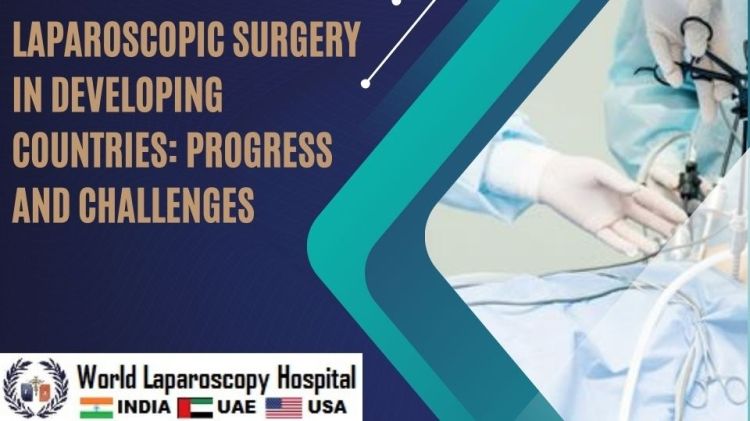Laparoscopic Surgery in Developing Countries: Progress and Challenges
Introduction:
Laparoscopic surgery, commonly known as minimally invasive surgery, has revolutionized the field of medicine globally, offering patients quicker recovery times, reduced postoperative pain, and shorter hospital stays. While this advanced surgical technique has become standard in developed nations, its adoption and integration in developing countries present a unique set of progress and challenges.

Progress in Laparoscopic Surgery:
Enhanced Patient Outcomes:
Laparoscopic surgery, with its small incisions and specialized instruments, has proven to enhance patient outcomes in developing countries. Reduced postoperative pain allows for faster recovery, enabling patients to return to their daily lives more swiftly.
Reduced Hospitalization Costs:
The minimally invasive nature of laparoscopic procedures contributes to shorter hospital stays, alleviating the burden on healthcare infrastructure and reducing overall treatment costs. This economic efficiency is particularly beneficial in resource-constrained settings.
Training and Skill Development:
Collaborative efforts between international organizations, medical institutions, and NGOs have facilitated training programs for healthcare professionals in developing countries. Surgeons are acquiring the skills needed to perform laparoscopic procedures, ensuring sustainable progress in the field.
Challenges in Laparoscopic Surgery in Developing Countries:
Limited Infrastructure:
Many developing nations face challenges in establishing and maintaining the necessary infrastructure for laparoscopic surgery. Insufficient access to advanced medical equipment, operating theaters, and sterilization facilities hinders the widespread implementation of this technique.
Resource Constraints:
The high initial cost of acquiring laparoscopic equipment and the ongoing expenses for maintenance pose significant challenges. Developing countries often grapple with limited financial resources, making it difficult to invest in the latest technology and sustain ongoing training programs.
Shortage of Skilled Personnel:
While progress has been made in training healthcare professionals, there remains a shortage of skilled personnel proficient in laparoscopic surgery. Continuous education and mentorship programs are essential to address this gap and ensure the sustainability of laparoscopic practices.
Cultural and Societal Factors:
Societal beliefs and cultural norms can influence the acceptance and adoption of laparoscopic surgery. Education and awareness campaigns are crucial to dispel myths, educate communities, and garner support for these modern surgical techniques.
Geographical Disparities:
Rural areas in developing countries often face more significant challenges in accessing laparoscopic surgery services. Efforts must be directed toward decentralizing healthcare resources, ensuring that the benefits of laparoscopic surgery reach remote and underserved communities.
Strategies for Overcoming Challenges:
Public-Private Partnerships:
Collaborations between governments, private healthcare providers, and non-profit organizations can pool resources to overcome infrastructure and financial constraints. Public-private partnerships can facilitate the establishment of well-equipped surgical centers in underserved areas.
Technology Transfer and Adaptation:
Initiatives to transfer technology from developed to developing countries can help bridge the equipment gap. Additionally, adapting existing technology to suit local conditions and budget constraints is crucial for sustainable implementation.
Continuous Training Programs:
Ongoing training programs for surgeons, nurses, and support staff are imperative to build and maintain expertise in laparoscopic surgery. These programs should be tailored to address the specific needs of each region and promote continuous professional development.
Community Engagement and Education:
Comprehensive community engagement and education initiatives are essential to overcome cultural and societal barriers. This involves working closely with local communities, religious leaders, and influencers to build trust and understanding about the benefits of laparoscopic surgery.
Telemedicine and Remote Consultations:
Leveraging telemedicine can connect remote healthcare facilities with expert surgeons, enabling remote consultations and guidance. This approach enhances the reach of laparoscopic surgery expertise to areas lacking skilled practitioners.
Conclusion:
The progress of laparoscopic surgery in developing countries holds immense promise for improving healthcare outcomes and reducing the economic burden on individuals and healthcare systems. However, addressing the unique challenges requires a multifaceted approach that combines infrastructure development, financial investment, continuous training, and community engagement. By navigating these challenges strategically, developing nations can embrace and integrate laparoscopic surgery, ensuring that the benefits of this advanced technique reach all corners of their populations.
